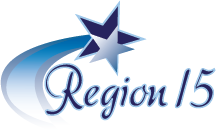
-
Student growth measures how much a student progresses academically during his or her time with a particular teacher. It takes into consideration a student’s entering skill level when measuring how much the student grew over time, and, as opposed to measuring student proficiency on an assessment, student growth isn’t concerned with whether or not a student passes a particular test or reaches a predetermined and uniform benchmark. It considers equally students who enter behind grade level, on grade level, and beyond grade level, tailoring growth expectations to each student’s context.
By measuring growth, a teacher develops a better understanding of the academic impact of his or her instructional choices. In a formative appraisal process like T-TESS, feedback derived from student growth acts as a complimentary piece to the feedback derived from the appraisal rubric. Whereas the rubric captures how the teacher’s practice impacts students holistically, student growth captures how the teacher’s practice impacts students academically.
Beginning in the 2018-2019 school year, teacher appraisal systems in Texas, whether the state-recommended system or a locally developed system, will need to include a measure of student growth at the individual teacher level unless exempted in your DOI or Charter. Districts using T-PESS for principal appraisal must also include a measure of student growth.
Region 15 hosts training for districts implementing student learning objectives to measure student growth for teacher appraisal. The training is for administrators and teacher leaders who will then provide a teacher orientation at the campus/district level.
You can find information about dates and registration information for this training on the Workshop page.
For more information visit the state website at https://texasslo.org.


